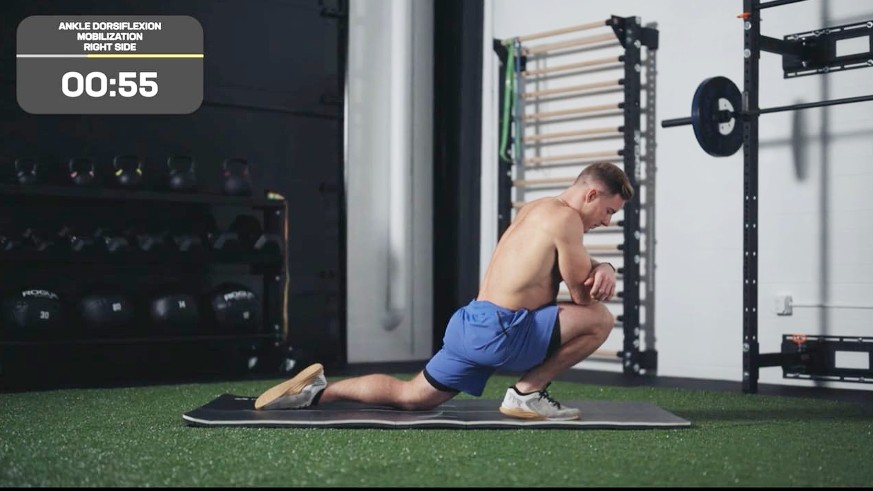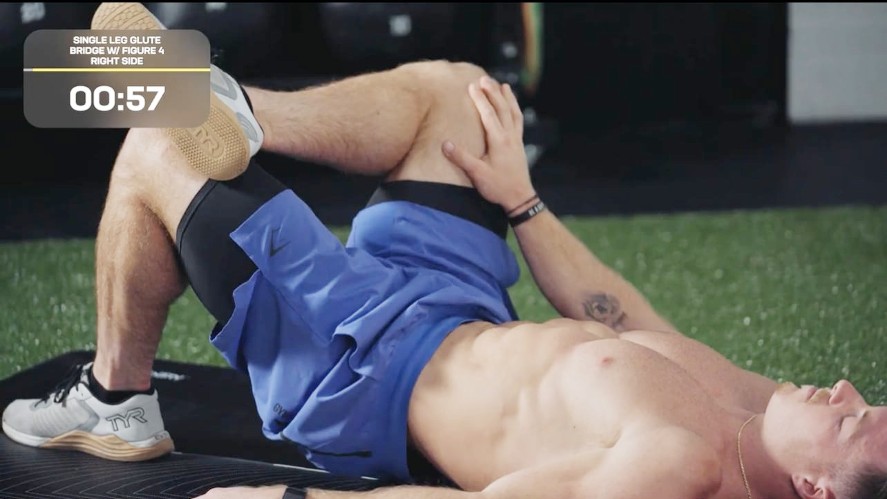
If you suffer from sore knees, here are three tried and tested exercises for avoiding knee pain that I highly recommend.
Although massage guns on the market could temporarily improve symptoms of knee pain, these exercises focus on strengthening the surrounding muscles, releasing tension and improving stability and flexibility. You’ll also need to work on any imbalances or weaknesses in underused muscles when working through long-term knee pain.
Anyone can suffer from knee pain, although high-intensity workouts and high-impact sports like running are more likely to exacerbate it. If this sounds like you, grab one of the best yoga mats and read on for this quick and effective three-move stretching routine for knee pain and why it’s a winner in my books.
What causes knee pain?
Let’s quickly cover knee joint anatomy 101. Your knee consists of three bones — the femur, tibia and patella — which form a hinge joint, meaning your knee can bend and straighten. The joint is kept stable by four ligaments and two major muscle groups — the hamstrings and quadriceps.
Your knees help support you during exercise, whether you enjoy yoga, running or weightlifting, so focus on maintaining healthy joints and strengthening the muscles around them to keep the knees stable and safe. The current World Health Organization (WHO) guidelines recommend adding strength sessions at least twice a week. However, other muscle groups help carry your bodyweight — your hip rotators and glutes, for example. So knee pain and improper knee alignment could also originate elsewhere.

The Orthopedic Clinic explains that your knees are some of the most stressed joints, receiving four times the amount of stress for every pound of bodyweight (yuck). Knee problems could be caused by poor posture and movement patterns, limited flexibility or muscular imbalances.
So, quad-dominant runners, this could increase the likelihood of ACL injuries, for example. But it’s not all doom and gloom. You can learn more about what causes knee pain and the best knee-strengthening exercises here, and what not to do.
Get instant access to breaking news, the hottest reviews, great deals and helpful tips.
3-move stretching routine exercises for knee pain
Add these to your exercise and recovery regime several times a week for best results as part of a warm-up and cool-down routine. Perform each exercise for at least two minutes, and repeat if you have time. Dynamic stretching is better for preparing muscles and joints before workouts, whereas static stretches are better for cool-downs.
I’ve plucked these three knee exercises from various routines featured in the Pliability knee prehab collaboration with Pliability athlete Noah Ohlsen. The series delivers sequences that build stronger knees using ‘short, dynamic corrective exercises to ‘target structures around the knees’ and improve movement quality and knee function.
I’ve formed this routine from my favorite stretches, which have fast become staples in my exercise regime, and I now use them regularly during class and with clients. Here they are.
1. Ankle dorsiflexion mobilization

How:
- Start in a half-kneeling position with your right knee up
- Keep your hips toward the inside, and knee pointing to the outside of, your pinky toe
- Lean your weight forward, keeping your heel flat on the ground
- Place both elbows on top of your knee to relax your calf muscle as you reach your end range. Hold for several minutes, then switch sides.
2. Single leg glute bridge with figure 4

How:
- Start on your back with knees bent and feet planted down
- Place your right ankle onto your left knee, creating a right angle with your right leg
- Use your abdominal muscles to flatten your lower back to the ground
- Gently press your right hand against the inside of the right knee to stretch the hip
- Press through your left heel, then lift your hips high and squeeze your glutes
- Pause, then lower slowly back to the ground
- Perform max reps for one minute and switch sides.
3. Cossack squats

How:
- Stand with legs wide and toes pointed forwards or slightly outward
- Engage your core. Extend your arms in front of you
- Bend your left knee and send your hips back and over to the left, lower into a side lunge and extend your right leg
- Keep your chest lifted and sit tall with a neutral spine
- Keep your left heel planted and when you reach your end range, push through your left heel to stand back up
- Repeat on your right side. If you feel a pinch in your hip, back off and reduce the depth of your squat. Hold an object if you need support. Continue for several minutes.
Here’s what happened when I did 90 Cossack squats every day for a week (it was a killer, but did wonders for my hips).
If you plan to take your knee health to the next level, we've included other TG-approved workouts and stretching routines to try below.
Remember to always warm up properly and move around as often as possible throughout the day. Your muscles and joints also need time to rest and recover from the stressors of exercise, so factor this into your weekly exercise regime. If you suffer from chronic knee pain, visit a qualified medical professional before starting any new recovery plan.
More from Tom's Guide
- Four reasons why you might get knee pain when running
- Yoga for knee pain workout
- 6 of the best exercises for knee pain
- 5 exercises to get back to running after an injury

Sam Hopes is a level 3 qualified trainer, a level 2 Reiki practitioner and fitness editor at Tom's Guide. She is also currently undertaking her Yoga For Athletes training course.
Sam has written for various fitness brands and websites over the years and has experience across brands at Future, such as Live Science, Fit&Well, Coach, and T3.
Having coached at fitness studios like F45 and Virgin Active and personal trained, Sam now primarily teaches outdoor bootcamps, bodyweight, calisthenics and kettlebells.
She also coaches mobility and flexibility classes several times a week and believes that true strength comes from a holistic approach to training your body.
Sam has completed two mixed doubles Hyrox competitions in London and the Netherlands and finished her first doubles attempt in 1:11.
